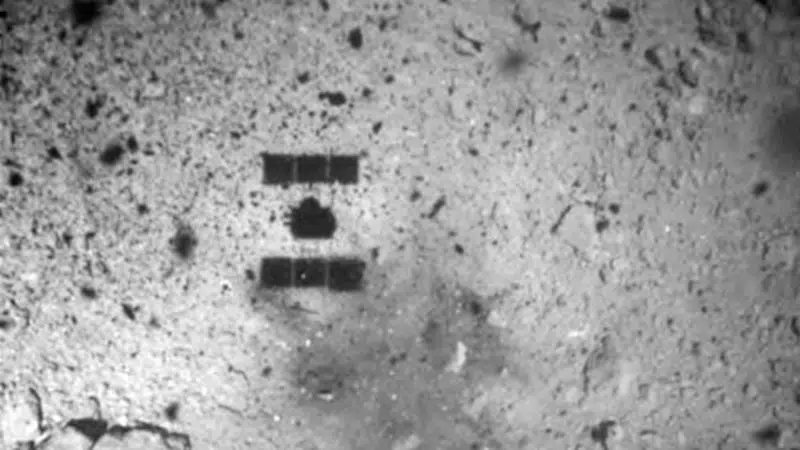
Japan to make crater on asteroid to get underground samples
TOKYO — Japan’s space agency said Monday that its Hayabusa2 spacecraft will follow up last month’s touchdown on a distant asteroid with another risky mission — dropping an explosive on the asteroid to make a crater and then collect underground samples for possible clues to the origin of the solar system.
Hayabusa2 made history on Feb. 22 when it successfully touched down on the boulder-strewn asteroid and collected some surface fragments.
The Japan Aerospace Exploration Agency said Hayabusa2 will drop an impactor the size of a baseball weighing 2 kilograms (4.4 pounds) on the asteroid on April 5 to collect samples from deeper underground that have not been exposed to the sun or space rays.


